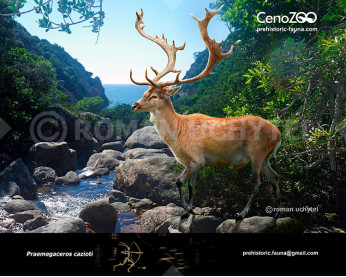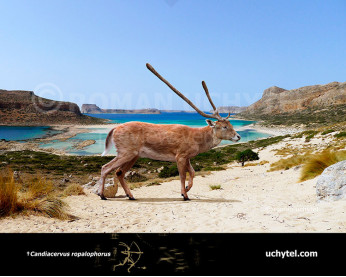Croizetoceros
213213Croizetoceros (Croizetoceros Heintz 1970)
Order: Artiodactyla
Family: Cervidae
Expansion and period of existence: Late Pliocene - Early Pleistocene of Europe (3.2 - 1.8 million years ago)
Dimensions: length - 1,2 m, height - 80 cm, weight - 30 kg.
A typical representative: Croizetoceros ramosus (Croizet & Jobert 1828)
Pliocene-Pleistocene boundary in Eurasia characterized by major climatic changes in the direction of the cooling climate. As a result, heat-loving forms retreated and were replaced by species living in temperate climates. Increased area of coniferous forest, savanna in the south of the Eurasian were replaced by boreal steppes and tundra in the north appeared. These biogeographical changes have an impact on the spread of Pliocene deer too. Early Pliocene fauna of deers comprised mainly forms associated with warmer climates. Miocene legacy included muntjacs Paracervulus and Metacervulus, Procapreolus and primitive deers from the Ceruavitus and Plioceruus genuses. At the end of the Early Pliocene in this cohort appears Croizetoceros - rather primitive deer of the Villafranca teriocomplex in Western Europe, named after the French paleontologist Croizet (Croizet, 1787 - 1859). Remains of this deer are plentiful in the late Pliocene - early Pleistocene of France and Spain, as well as in the Pliocene of Ukraine, Moldova and Poland. One of the notable features - a large degree of tooth wear: probably due to the highly abrasive power feeds. Taxonomic history of the Croizetoceros is a few messy because this deer repeatedly been diagnosed as a species of «ramosus», but belonged to other genus of small Cervidae. In 1828 Croizet and Jobert share Pliocene deer of France into two subgenus, Cataglochis and Anoglochis, which are currently completely devoid of taxonomic value and reclassified into different species, not always united in the phylogenetic sense. In addition, these authors have never done their detailed description. A few years later (1853) these materials have been revised, resulting in a species of isolated Cervus ramosus. Finally Norwegian paleontologist Heinz (Heintz, 1898 -1975) conducted a comprehensive review of deer Villafranchian Spain and France in 1970, proving that the form «ramosus» has nothing to do with other fossil and that it represents an independent taxon. From this point was set generic status Croizetoceros.
Pictured here Croizetoceros ramosus fonelensis - the smallest subspecies found in later Villafranchian deposits of Pyrenees.
Croizetoceros (Croizetoceros Heintz 1970)
Order: Artiodactyla
Family: Cervidae
Expansion and period of existence: Late Pliocene - Early Pleistocene of Europe (3.2 - 1.8 million years ago)
Dimensions: length - 1,2 m, height - 80 cm, weight - 30 kg.
A typical representative: Croizetoceros ramosus (Croizet & Jobert 1828)
Pliocene-Pleistocene boundary in Eurasia characterized by major climatic changes in the direction of the cooling climate. As a result, heat-loving forms retreated and were replaced by species living in temperate climates. Increased area of coniferous forest, savanna in the south of the Eurasian were replaced by boreal steppes and tundra in the north appeared. These biogeographical changes have an impact on the spread of Pliocene deer too. Early Pliocene fauna of deers comprised mainly forms associated with warmer climates. Miocene legacy included muntjacs Paracervulus and Metacervulus, Procapreolus and primitive deers from the Ceruavitus and Plioceruus genuses. At the end of the Early Pliocene in this cohort appears Croizetoceros - rather primitive deer of the Villafranca teriocomplex in Western Europe, named after the French paleontologist Croizet (Croizet, 1787 - 1859). Remains of this deer are plentiful in the late Pliocene - early Pleistocene of France and Spain, as well as in the Pliocene of Ukraine, Moldova and Poland. One of the notable features - a large degree of tooth wear: probably due to the highly abrasive power feeds. Taxonomic history of the Croizetoceros is a few messy because this deer repeatedly been diagnosed as a species of «ramosus», but belonged to other genus of small Cervidae. In 1828 Croizet and Jobert share Pliocene deer of France into two subgenus, Cataglochis and Anoglochis, which are currently completely devoid of taxonomic value and reclassified into different species, not always united in the phylogenetic sense. In addition, these authors have never done their detailed description. A few years later (1853) these materials have been revised, resulting in a species of isolated Cervus ramosus. Finally Norwegian paleontologist Heinz (Heintz, 1898 -1975) conducted a comprehensive review of deer Villafranchian Spain and France in 1970, proving that the form «ramosus» has nothing to do with other fossil and that it represents an independent taxon. From this point was set generic status Croizetoceros.
Pictured here Croizetoceros ramosus fonelensis - the smallest subspecies found in later Villafranchian deposits of Pyrenees.

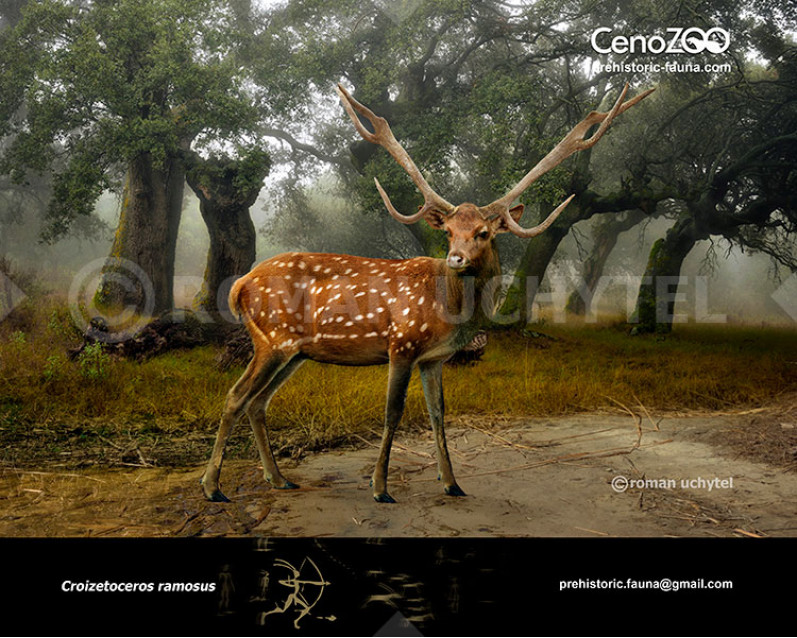
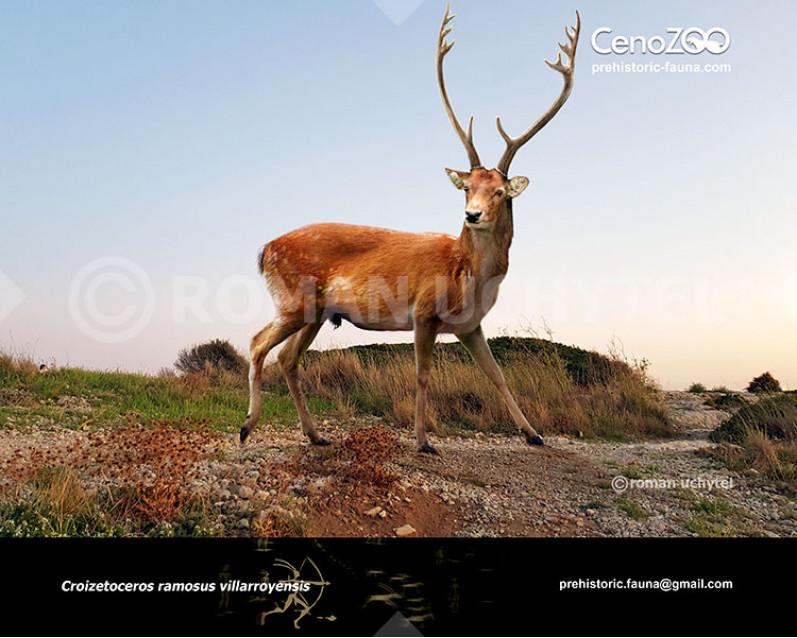
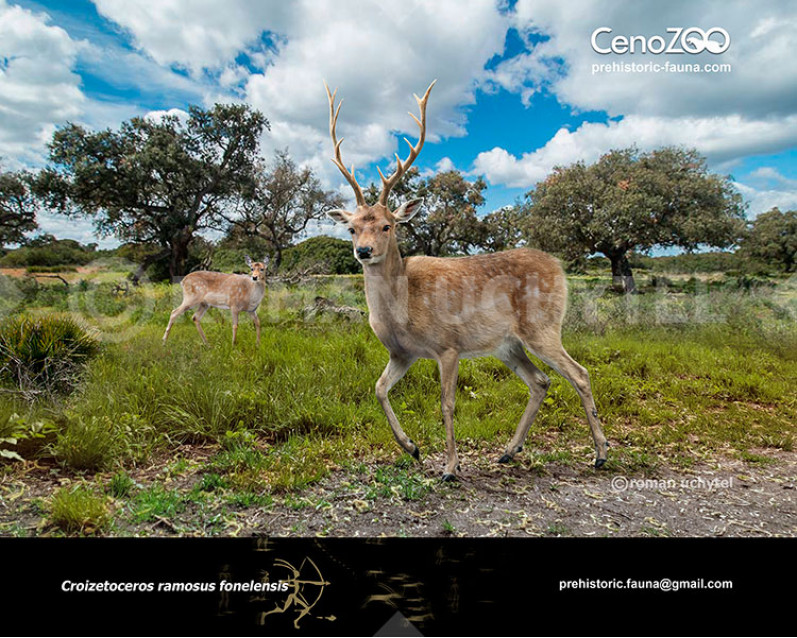
-797x638.jpg)
-797x638.jpg)



-70x56.jpg)
-70x56.jpg)
-346x277.jpg)
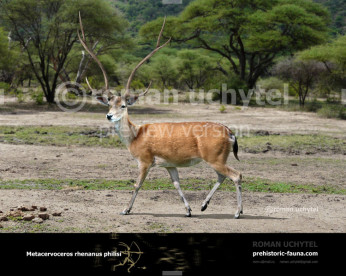
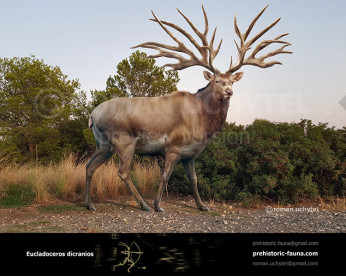
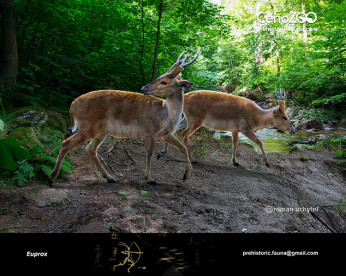
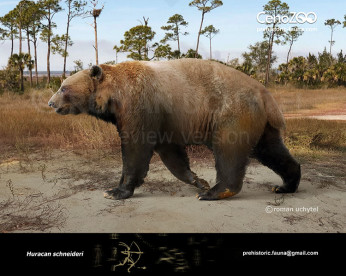
-346x277.jpg)
